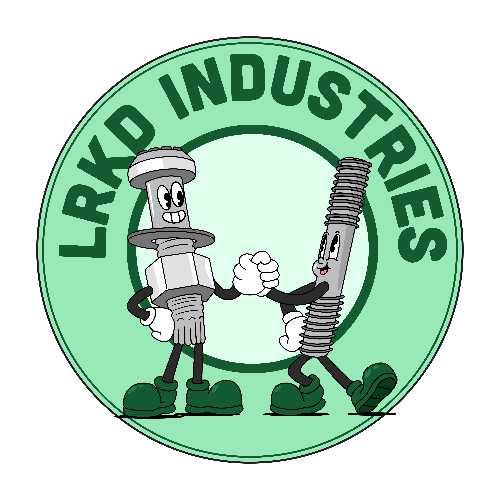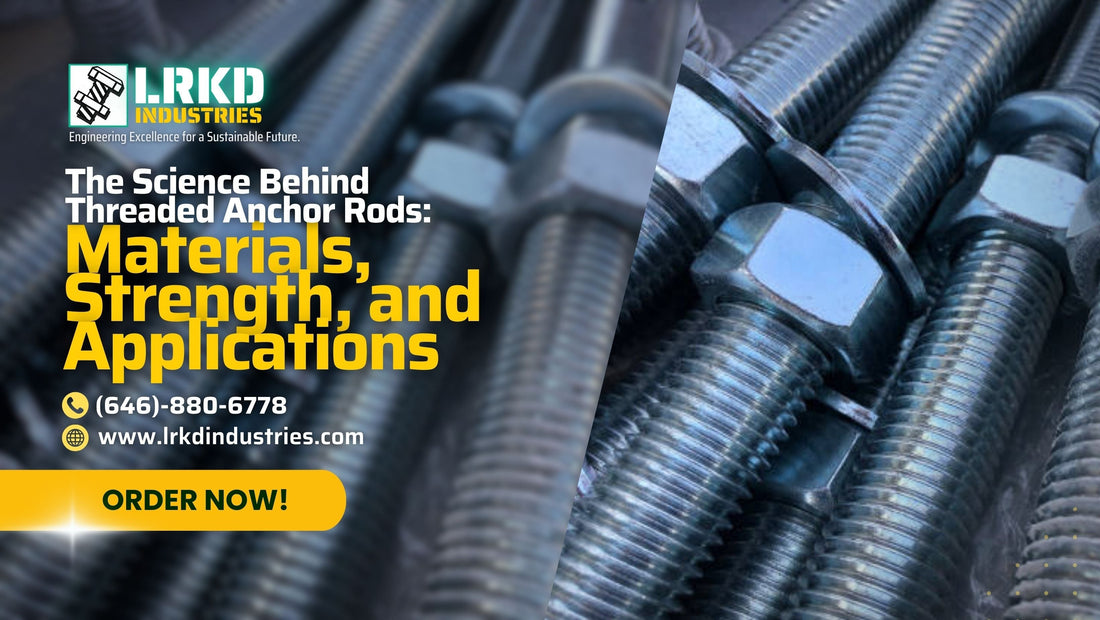In modern construction, structural stability is paramount, and one of the unsung heroes ensuring this integrity is the threaded anchor rod. These essential fasteners provide robust anchorage for buildings, bridges, and industrial equipment, resisting forces such as tension, shear, and vibration. But what makes these rods so reliable? This article delves into the science behind their material composition, load-bearing capacities, and real-world applications, providing valuable insights for engineers, procurement specialists, and decision-makers.
Understanding Threaded Anchor Rods
A threaded anchor rod is a high-strength fastener embedded into concrete, masonry, or structural steel to secure loads and distribute forces effectively. Available in various materials, coatings, and configurations, these rods play a critical role in seismic retrofitting, foundation reinforcement, and heavy machinery installation.
Key Components of a Threaded Anchor System
Anchor Rod – The threaded bar provides tensile strength.
Nuts & Washers – Used to secure the connection.
Baseplate (if applicable) – Transfers loads to the rod.
Adhesive or Expansion Mechanism – Ensures embedment into the substrate.
Materials & Grades: What Makes Them Strong?
The material composition of threaded anchor rods directly impacts their load-bearing capacity, corrosion resistance, and durability. Below is a breakdown of the most common materials used:
|
Material |
Composition |
Strength Characteristics |
Common Applications |
|
Carbon Steel |
High iron content with carbon |
High tensile strength but susceptible to corrosion |
Structural steel connections, foundation bolts |
|
Stainless Steel (304, 316) |
Iron, chromium, nickel, molybdenum |
Superior corrosion resistance, high durability |
Marine environments, chemical plants, food industry |
|
Galvanized Steel |
Carbon steel with zinc coating |
Enhanced corrosion protection |
Outdoor applications, infrastructure projects |
|
High-Strength Alloy Steel (ASTM A193, A325, A354) |
Carbon, molybdenum, chromium, vanadium |
High yield strength, impact resistance |
Heavy-duty industrial applications, bridges, nuclear facilities |
Material Selection Considerations
Corrosion Resistance: Stainless steel and galvanized options are preferred for humid, marine, or chemical exposure.
Load Requirements: High-strength steel is necessary for structural and industrial anchorage.
Environmental Conditions: Temperature fluctuations and exposure to chemicals impact material choice.
Load Capacities & Performance Factors
A crucial aspect of selecting threaded anchor rods is their load capacity, which determines their ability to withstand applied forces without failure.
Load Capacities by Rod Grade (ASTM Standards)
|
Rod Grade |
Tensile Strength (ksi) |
Yield Strength (ksi) |
Load Capacity (lbs) per 1" Diameter |
|
A36 (Carbon Steel) |
58-80 |
36 |
36,000 |
|
A193 B7 (Alloy Steel) |
125-150 |
105 |
105,000 |
|
A325 (Structural Bolt) |
120 |
92 |
92,000 |
|
A354 BD (High-Strength) |
140 |
120 |
120,000 |
|
316 Stainless Steel |
70-90 |
30-45 |
45,000 |
Factors Affecting Load Capacity
Embedment Depth: The deeper the anchor, the stronger the connection.
Concrete Strength: Higher-grade concrete increases load resistance.
Rod Diameter: Larger diameters provide greater tensile capacity.
Installation Method: Adhesive vs. mechanical anchoring affects performance.
Applications
Infrastructure and Construction
Example: The use of ASTM A354 BD threaded rods in bridge construction ensures resistance to extreme loads and seismic forces. In projects like the San Francisco-Oakland Bay Bridge, high-strength anchors were crucial for long-term durability.
Industrial Machinery & Equipment Anchoring
Example: In manufacturing plants, heavy CNC machines are secured using A193 B7 anchor rods, preventing movement due to vibration and dynamic loads.
Seismic Retrofitting & Structural Reinforcement
Example: High-rise buildings in earthquake-prone regions utilize A325 anchor bolts for foundation stability, ensuring lateral force resistance.
Best Practices for Installation & Maintenance
Proper installation of threaded anchor rods is crucial to achieving optimal performance. Below are industry-recommended best practices:
Installation Guidelines
|
Step |
Procedure |
|
1 |
Drill hole to required depth and diameter. |
|
2 |
Clean holes of debris and dust for proper adhesion. |
|
3 |
Insert adhesive (if applicable) before placing the rod. |
|
4 |
Insert threaded rod and rotate for even distribution. |
|
5 |
Allow adhesive to cure before applying load. |
|
6 |
Torque nuts to specified values for maximum strength. |
Maintenance & Inspection
Periodic Torque Testing: Ensures bolts remain secure under operational stress.
Corrosion Checks: Especially in coastal or industrial environments.
Replacement Schedule: Worn or damaged rods must be replaced to avoid structural failures.
Industry Trends & Innovations
High-Performance Coatings
New advancements in polymer and ceramic coatings offer extended corrosion resistance beyond traditional galvanization.
Smart Anchors & IoT Integration
Sensor-equipped anchor rods enable real-time load monitoring, improving safety and predictive maintenance in infrastructure projects.
Sustainable Materials
Research into eco-friendly alloys is reducing carbon footprints in major construction projects.
Threaded Anchor Rod Engineering Insights
When every bolt counts, accuracy isn't optional—it’s essential.
Get to know the backbone of structural anchoring systems—threaded anchor rods—through the lens of science and engineering. At LRKD Industries, we’re not just supplying anchor rods; we’re backing it up with technical precision. From material composition and tensile strength to how these rods perform in varied applications, we bring clarity to complexity.
Explore how factors like steel grade, galvanization, and stress testing impact real-world durability—helping you make smarter choices for both temporary and permanent structural support systems.
Ideal for:
Engineers seeking performance reliability
Contractors requiring code-compliant components
Project managers focused on safety and structural integrity
📍 Address: 98 N Industry CT, Deer Park, NY 11729, US
📞 Phone: +1 646-880-6778
📧 Email: info@lrkdindustries.com
👉 Ready to learn more about our anchor bolt systems? Click here for full product specs and technical documentation.
Trust LRKD Industries—where strength meets science.


